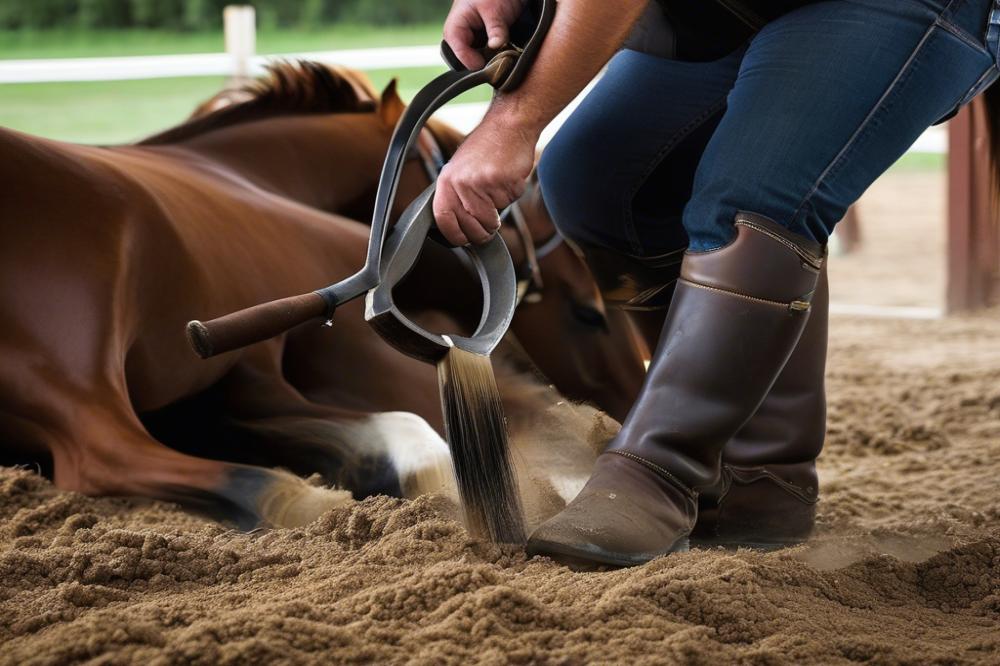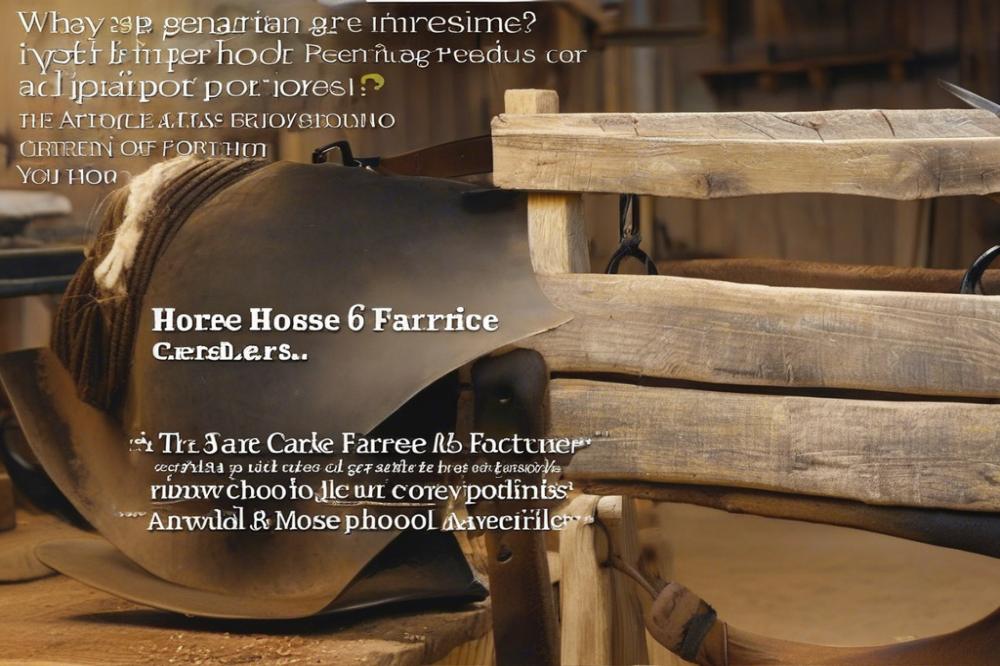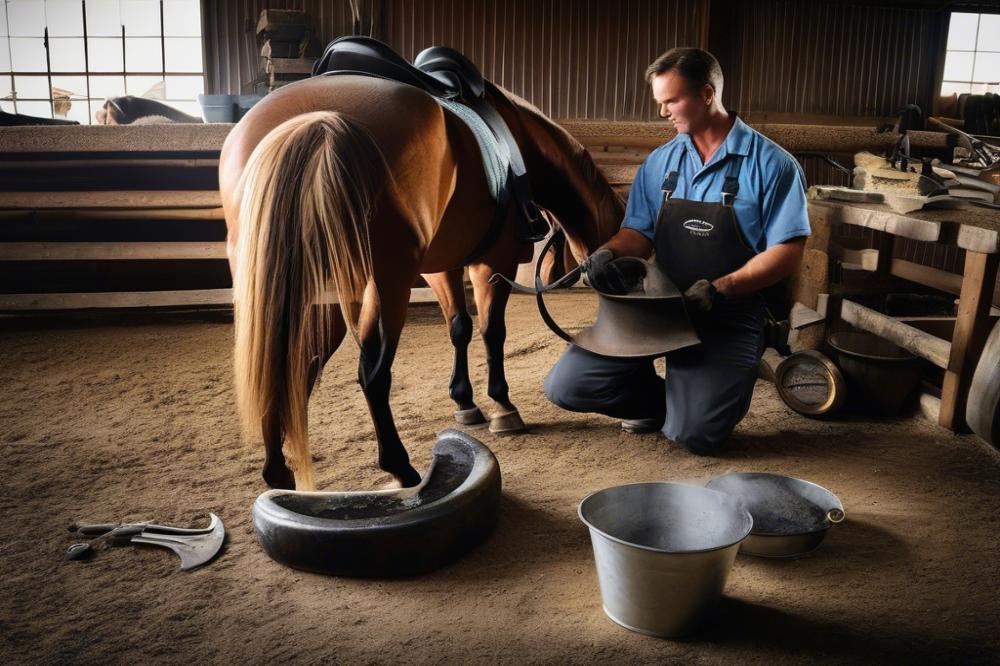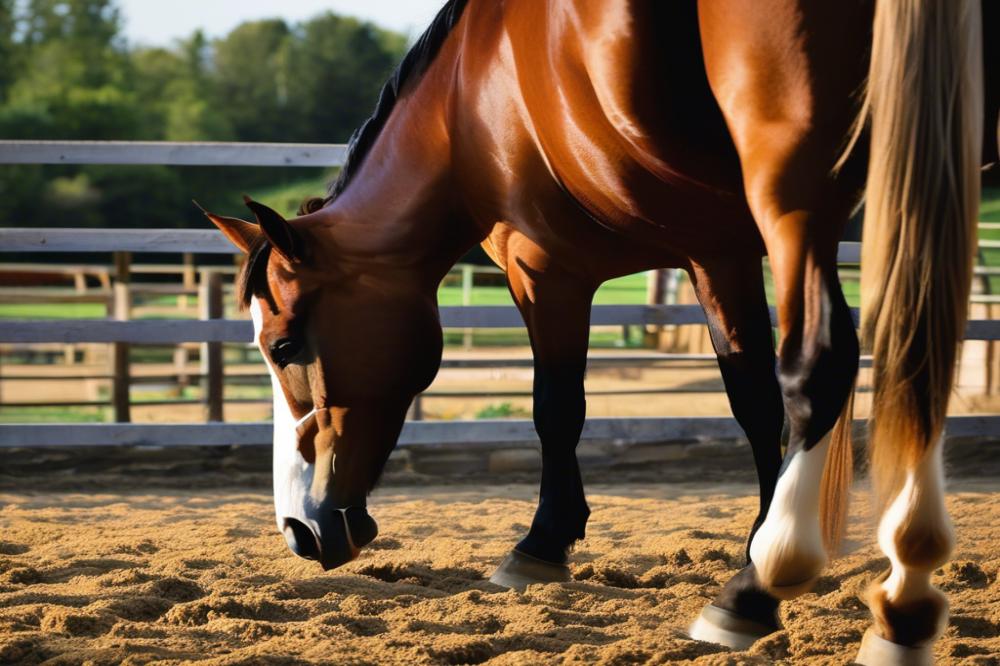What Is a Farrier?
Have you ever wondered who takes care of a horse’s hooves? That’s where a farrier comes into play. A farrier is a skilled professional, part blacksmith and part veterinarian. They specialize in horse hoof care and play a crucial role in making sure our equine friends are healthy and happy. Proper hoof maintenance is essential because a horse’s hooves are like the foundation of a house; without a solid base, everything falls apart.
Horses’ hooves are fascinating structures. They’re made of a hard outer layer, much like fingernails, but they require a lot more attention. Just as we maintain our own nails, horses need regular trimming and care to keep their hooves in top shape. If you imagine a horse galloping across the fields, it’s easy to forget how much stress those hooves endure daily. The pounding they take can lead to various issues like cracks, infections, or even lameness. That’s why equine professions, particularly farriers, are so vital in the world of horse care.
Think about it: failing to care for a horse’s hooves can lead to a whole host of problems. When a farrier steps in, they examine each hoof carefully and address any concerns. Whether it’s shoeing, trimming, or treating conditions, their work is all about keeping the horse comfortable and sound. Ownerawareness of signs a horse is dying of old age often includes recognizing changes in how a horse walks or stands, which can be linked back to hoof problems that a farrier might detect early.
In the end, the farrier’s role is to promote overall health and well-being through effective horse hoof care. They help maintain not just the hooves but also the horse’s quality of life, allowing them to continue performing, whether it be in the ring or frolicking in the pasture. So, next time you see a farrier at work, remember that these professionals are the unsung heroes of the equine world, keeping our noble companions happy and healthy with each clip and nail.
As a side note, if you’re ever intrigued about specific breeds, one fun fact is the buckskin horse facts that showcase their stunning coats. But let’s not stray too far from hooves; they’re the real stars of this story!
History of Farrier Work

The origins of farriery date back thousands of years. Ancient civilizations, like the Egyptians and Romans, had a need for horse care. Horses played a crucial role in everyday life, from transport to warfare. They relied on sturdy shoes for protection. This was the beginning of what we now call farrier services.
As time went on, the role evolved. In the Middle Ages, horses became vital for farming and travel. Skilled craftsmen started specializing, combining both horse hoof maintenance and blacksmithing. This was no easy task. Imagine working with hot metal while ensuring the horse stays calm! These early farriers had to balance their craft with animal care.
A Blend of Skills
Interestingly, farriery and blacksmithing are two sides of the same coin. A blacksmith creates tools and metal items, while a farrier focuses on equine health and hoof coverings. This connection is significant. The craftsmanship required for both trades demands precision and practice. Many farriers still use traditional techniques passed down through generations, which adds to their unique charm.
Fast forward to the present. Today, the field of horse care includes certified farriers who specialize in various aspects of hoof care. They understand anatomy, health, and even shoe selection. Each horse has different needs, just like we all have our quirks. This understanding can make all the difference when it comes to equine wellness.
Throughout history, the relationship between horses and humans has transformed. As technology progressed, so did methods of horse hoof maintenance. From simple wooden shoes to modern materials like composite and specialty metals, improvements keep coming. It’s fascinating how farriery has adapted to better serve horses and their owners.
Familiarity with this trade is essential for any horse owner. Knowing when to call on a farrier for routine check-ups can save trouble down the line. Some may think of it merely as shoeing a horse, but it’s much more than that. Proper farrier work helps avoid serious health issues, making it a critical part of equine professions.
Education and Certification

Becoming a farrier requires a mix of learning and doing. Many start with a high school diploma or G.E.D. From there, some choose to attend specialized schools that focus on horse hoof care. These programs teach the basics of equine health and the principles of hoof maintenance. Classes cover anatomy, shoeing techniques, and even horse behavior.
Hands-on training is where the magic really happens. Apprenticeships can help aspiring farriers gain valuable real-world experience. Working under a seasoned professional can be like having your own personal guide in a foreign land. You learn one-on-one, picking up skills and tips that you won’t find in textbooks. It’s not all sunshine and roses, though; the work can be demanding. However, each moment spent with real horses builds confidence and sharpens your abilities.
Certification can open doors in the equine professions. While not always required, it can boost your credibility as a provider of farrier services. Organizations offer various certification options to help professionals prove their skills. Passing tests shows both knowledge and commitment. Many horse owners feel more secure knowing their farrier is certified. It’s a bit like getting a driver’s license; it shows you are serious about safety and quality.
In short, the path to becoming a farrier blends education and hands-on experience. Understanding the needs of horses is crucial. Learning from experienced mentors brings wisdom that lasts a lifetime. When it comes to horse care and hoof maintenance, know-how makes all the difference.
Farrier Duties and Responsibilities

What does a farrier actually do? Well, farriers are skilled professionals who take care of horse hooves. They provide several essential services to keep our equine friends healthy and happy. One of the primary tasks is trimming the hooves to prevent overgrowth. Just like you wouldn’t let your nails grow too long, horses need regular hoof care to stay comfortable and safe.
Another critical aspect of their job involves fitting shoes. They work with different types of shoes depending on the horse’s needs and level of work. Some horses might need special shoes for better traction, while others could benefit from lightweight options for everyday riding. Farrier services don’t stop there—many will also provide advice on how owners can help maintain their horse’s hooves between visits.
The Importance of Regular Hoof Care
Why is regular hoof maintenance so crucial? Think about it: horses carry a lot of weight on their feet. If those hooves aren’t healthy, it can affect the entire horse. Problems like cracks, infections, or uneven wear can lead to serious issues if left unchecked. Regular visits from a farrier can help catch these problems early.
Imagine it’s like going to the dentist. You wouldn’t skip check-ups, right? A little prevention goes a long way. You want your horse to strut their stuff, not limp around! Keeping hooves balanced and properly trimmed promotes not just comfort but overall equine health as well.
Assessment and Treatment of Hoof Problems
Now, let’s talk about assessment. A farrier examines each hoof for signs of trouble. They look for cracks, thrush, or any other red flags. Once identified, they’ll recommend the best course of action. Sometimes it’s as simple as a trim; other times, it might require more specific treatments.
Addressing hoof problems early is key. If a horse develops an issue like laminitis, it’s crucial to involve a farrier immediately. They often collaborate with veterinarians to create a well-rounded treatment plan. Poor hoof care can lead to longer recovery times and increased discomfort for the horse. So, having a knowledgeable farrier can be the difference between a happy horse and a lame one.
Ultimately, the job of a farrier goes beyond just making hooves look nice. Their expertise is vital for long-lasting equine health and well-being. Connecting with a good farrier is like finding a trusted mechanic for your car. You want someone who knows what they’re doing and genuinely cares about your horse’s needs!
Tools and Techniques
Essential Tools Used by Farriers
When it comes to horse hoof care, a farrier’s toolkit resembles a treasure chest filled with specialized equipment. At the heart of this kit are hoof knives, which are sharp tools used to trim the hooves. These knives need to be handled with a steady hand and quick eyes. Another important tool is the rasp, similar to a woodworking file, which helps smooth out the edges after trimming. Then there are nippers, designed to cut through tougher hoof material. Picture them as heavy-duty scissors! Tack on a good hammer used for driving nails into shoes, and you have a solid foundation. Don’t forget the anvil – it’s where the magic of shoe-making happens.
Techniques Employed in Trimming and Shoeing
Trimming hooves is kind of like giving a haircut. A farrier looks for overgrowth that can cause discomfort or even issues with equine health. They carefully remove the excess, ensuring the hoof maintains its natural shape. When it comes to shoeing, the process is just as meticulous. After choosing the right size shoe, it’s heated and shaped on the anvil. Once prepped, the farrier uses nails to secure the shoe, making sure it fits snugly but doesn’t pinch the sensitive parts of the hoof. Always, the goal is to keep the horse comfortable while also ensuring proper horse hoof maintenance.
Advancements in Tools and Technology in Farriery
The Farrier-Horse Relationship
Building trust between the farrier and the horse is crucial. Think of it like a friendship. Just as people need to feel safe and comfortable with one another, horses do too. When a farrier starts working with a horse, taking the time to connect is essential. This bond helps the horse feel at ease during the process of hoof care.
Assessing the horse’s behavior is a significant part of the job. Observing how the horse reacts can tell a farrier a lot. Is the horse fidgeting or standing still? Does it seem tense or relaxed? These cues help the farrier determine how to approach the situation. Some horses may be nervous, while others might be quite calm. Understanding these differences can lead to better care.
A positive experience for the horse often starts before the work even begins. Creating a quiet environment can help calm any nerves. Gentle voices and slow movements can make a big difference. Farriers often use treats or soothing words to keep horses relaxed. It’s like a reward for good behavior.
Moreover, proper handling techniques are vital. Knowing how to hold a hoof without causing discomfort shows that the farrier cares about equine health. It’s important to support the horse physically and emotionally during the process of horse hoof maintenance. Many horses appreciate a good scratch or pat, and this can solidify trust further.
In the realm of equine professions, good communication is everything. Every horse has a personality. Some might be dramatic and loud, while others are quiet and shy. Talking softly can ease a horse’s anxiety. It sounds easy, but the right words can ensure a smoother experience for everyone involved.
Incorporating breaks as needed can also help. If a horse appears restless, taking a moment can work wonders. Just like humans, horses can get overwhelmed. A little pause for relaxation can turn a stressful situation into a simple task.
The Heart of Equine Care: A Farewell to the Farrier
In wrapping up our journey into the world of farriers, it’s important to reflect on the key points we’ve uncovered. Farriers are much more than just hoof caretakers; they are skilled artisans who blend knowledge with a genuine passion for horses. Their expertise in shoeing, trimming, and overall hoof health plays a vital role in the daily lives of these magnificent animals. Remember, a horse’s feet are like the foundation of a house. If the foundation isn’t sturdy, nothing else can stand tall.
The critical contribution of farriers is undeniable. Healthy hooves lead to happier horses, which in turn means better performance in activities ranging from thrilling races to graceful dressage events. Just think about a dressage saddle vs all purpose! The right equipment matters, but so does the well-being of the horse wearing it. A farrier helps to set the stage for that horse to shine, allowing it to perform its best.
As you admire the beauty of horses prancing through fields or performing intricate movements, consider the essential role farriers play in maintaining their health. Their work requires not just technical skill but also compassion and intuition. It’s often said that a good farrier can spot trouble before it even starts. Isn’t it fascinating to think how their keen observations save horses from potential pain down the road?
So next time you see a farrier at work, take a moment to appreciate the intricate dance happening between horse and handler. Picture this: a horse husband watching with keen interest, learning the ropes from a seasoned professional who’s been shaping hooves for years. Such scenes are built on respect and love, showcasing the bond between humans and horses that farriers nurture every day.
As we conclude, let’s celebrate this indispensable profession. Every trim and every shoe is a testament to the farrier’s dedication and skill. Let’s share our appreciation and recognize how this often-overlooked role significantly impacts equine welfare, ensuring that horses remain strong, healthy, and ready to gallop into the sunset. Cheers to our farriers—here’s to their unwavering commitment to hoof health and the heart of horse care!



